On April 15, 1989, a crush took place at Hillsborough killing 97 people, almost all Liverpool fans. The Hillsborough Independent Panel Report confirmed the facts.
Were people killed in the disaster?
Yes
Ninety-seven individuals died as a direct result of their injuries sustained in a crush at the Leppings Lane end of the ground, where Liverpool fans were allocated for the match.
Many more passed away in the years after as a result of their experiences at Hillsborough, which impacted severely on the mental health of those connected to the tragedy.
Was there error in police planning?
Yes
On police advice, there were only seven turnstiles allocated by Sheffield Wednesday to admit 10,100 fans.
The jury said: “The jury feel that there were major omissions in the 1989 operational order, including specific instructions for managing the crowd outside the LL turnstiles, specific instructions as to how the pens were to be filled and monitored, specific instructions as to who would be responsible for the monitoring of the pens.”
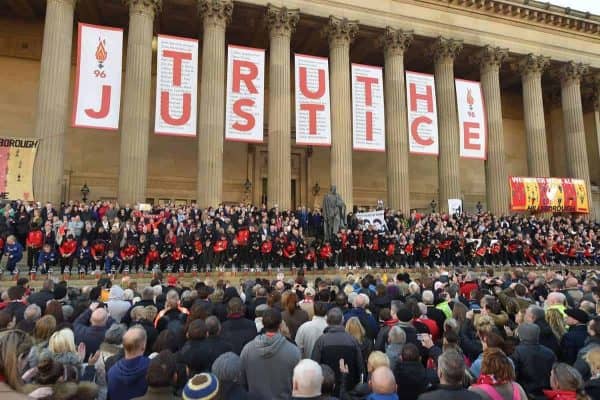
Was there error in policing turnstiles?
Yes
The jury said: “Police response to the increasing crowds at Leppings Lane was slow and uncoordinated. The road closure and sweep of fans exacerbated the situation.”
They added that no filter cordons were used, no contingency plans made and attempts to close perimeter gates were too late.
The buildup of supporters outside the ground was already dangerous by 2.25pm and the emergency exit gates were opened 18 minutes before the 3pm kickoff time.
Did police commander errors contribute?
Yes
The jury said: “Commanding officers should have ordered the closure of the central tunnel before the opening of gate C was requested as pens three and four were full.”
They added that commanding officers should have asked for figures and failed to recognise pens were at capacity.
Was there error in opening gates?
Yes
The jury said: “Commanding officers did not inform officers in the inner concourse prior to the opening of gate C.”
They added that they failed to consider where fans would go and to consider the closure of the tunnel.
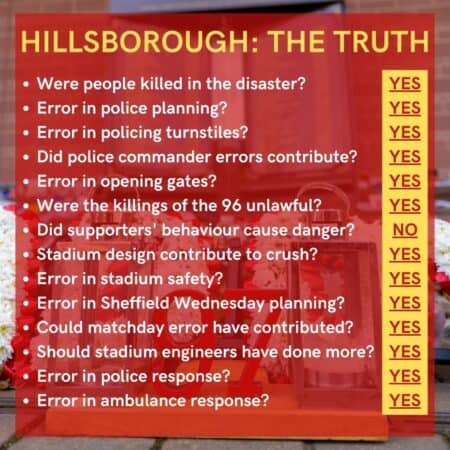
Were the killings of the 96 unlawful?
Yes
Andrew Devine later died, on July 27, 2021, as a direct result of the injuries he sustained at Hillsborough Stadium.
At an inquest hearing the coroner found that it was “more likely than not that Andrew Devine was unlawfully killed, making him the 97th fatality from the events of April 15, 1989.”
The only successful prosecution of an individual relating to the disaster or the cover-up came when the stadium’s health and safety officer, Graham Mackrell, was fined £6,500.
Did supporters’ behaviour cause danger?
No
The jury was then asked if there was any behaviour on the part of football supporters that may have caused or contributed to the dangerous situation at the Leppings Lane turnstile.
They replied no.
Did the stadium design contribute to the crush?
Yes
The jury said: “Design and layout of the crush barriers in pen three and four were not fully compliant with the Green Guide.”
They added that the lack of dedicated turnstiles meant capacities could not be monitored and there were too few turnstiles. Signage to the side pens was inadequate.
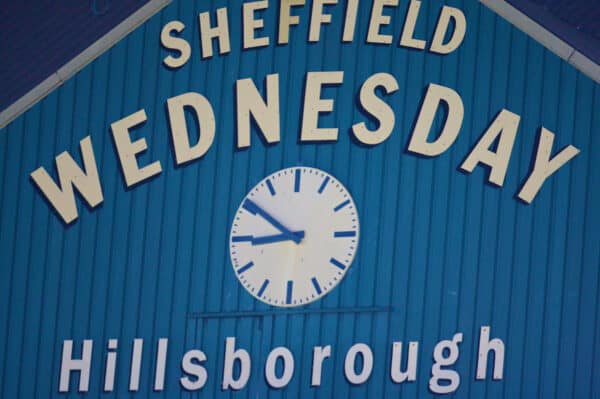
Was there error in stadium safety?
Yes
They jury said the safety certificate was never amended to reflect changes at the Leppings Lane end.
The capacity figures were incorrectly calculated and the safety certificate had not been reissued since 1986.
Was there error in Sheffield Wednesday’s planning?
Yes
The jury said: “The club did not approve the plans for dedicated turnstiles to each pen.”
The club did not agree contingency plans with police and there was inaccurate information on the tickets.
Could matchday error from Sheffield Wednesday have contributed?
Yes
The jury said: “Club officials were aware of the huge numbers of fans still outside the LL turnstiles at 2.40pm. They should have requested a delayed kickoff at this point.”
Should stadium engineers have done more?
Yes
The jury said: “Eastwoods did not make their own calculations when they became consultants for Sheffield Wednesday FC.”
They said that calculations were incorrect and Eastwoods failed to recalculate capacities and update the safety certificate after 1986.
They added that Eastwoods failed to recognise the removal of crush barriers could create a dangerous situation.
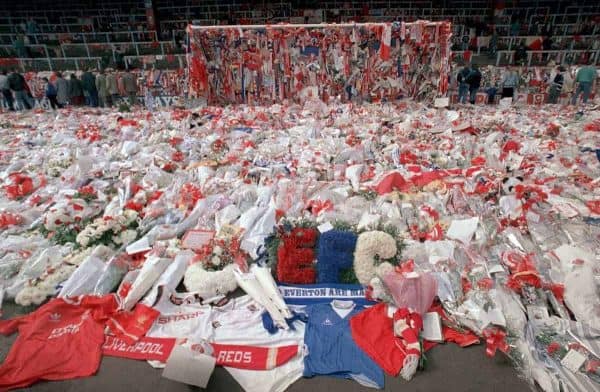
Was there error in the police response?
Yes
The jury agreed that the the police delayed calling a major incident and there was a lack of communication, coordination and command and control.
Was there error in the ambulance response?
Yes
They said ambulance officers at the scene failed to ascertain the nature of the problem, and the failure to call a major incident led to delays in responses to the emergency.
Only three ambulances ever made it onto the pitch, one at 3.20pm, one at 3.35pm and one much later on. The match was stopped at 3.06pm.
Rest in peace the 97. You’ll Never Walk Alone.
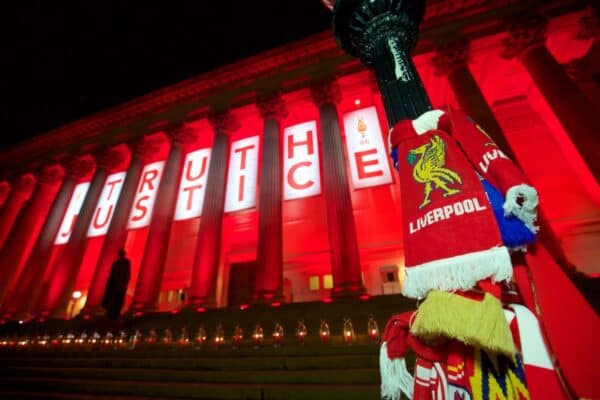

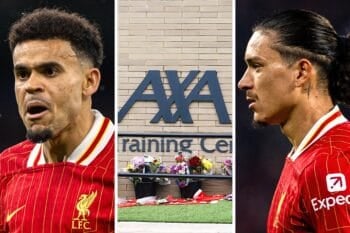
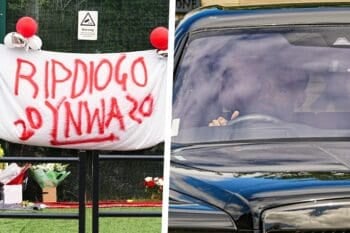

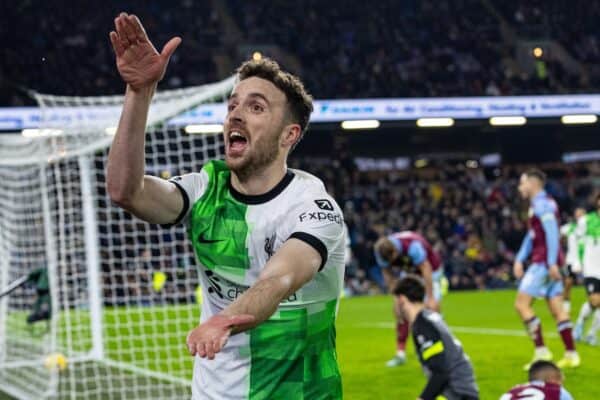
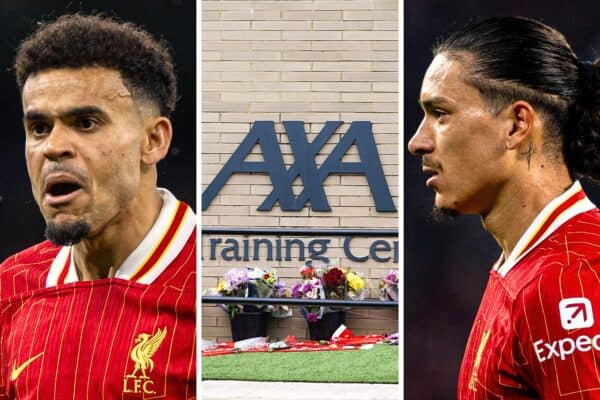
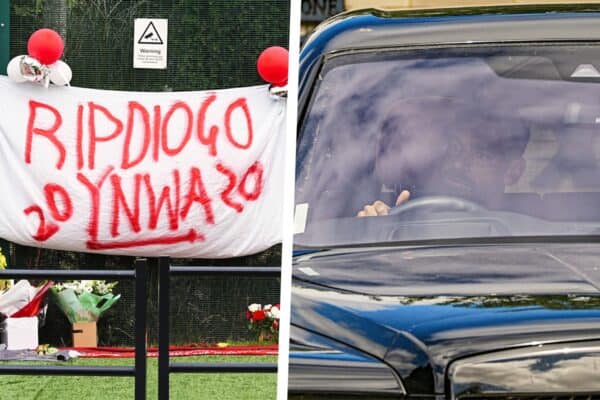









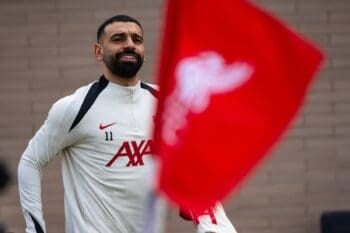

Fan Comments